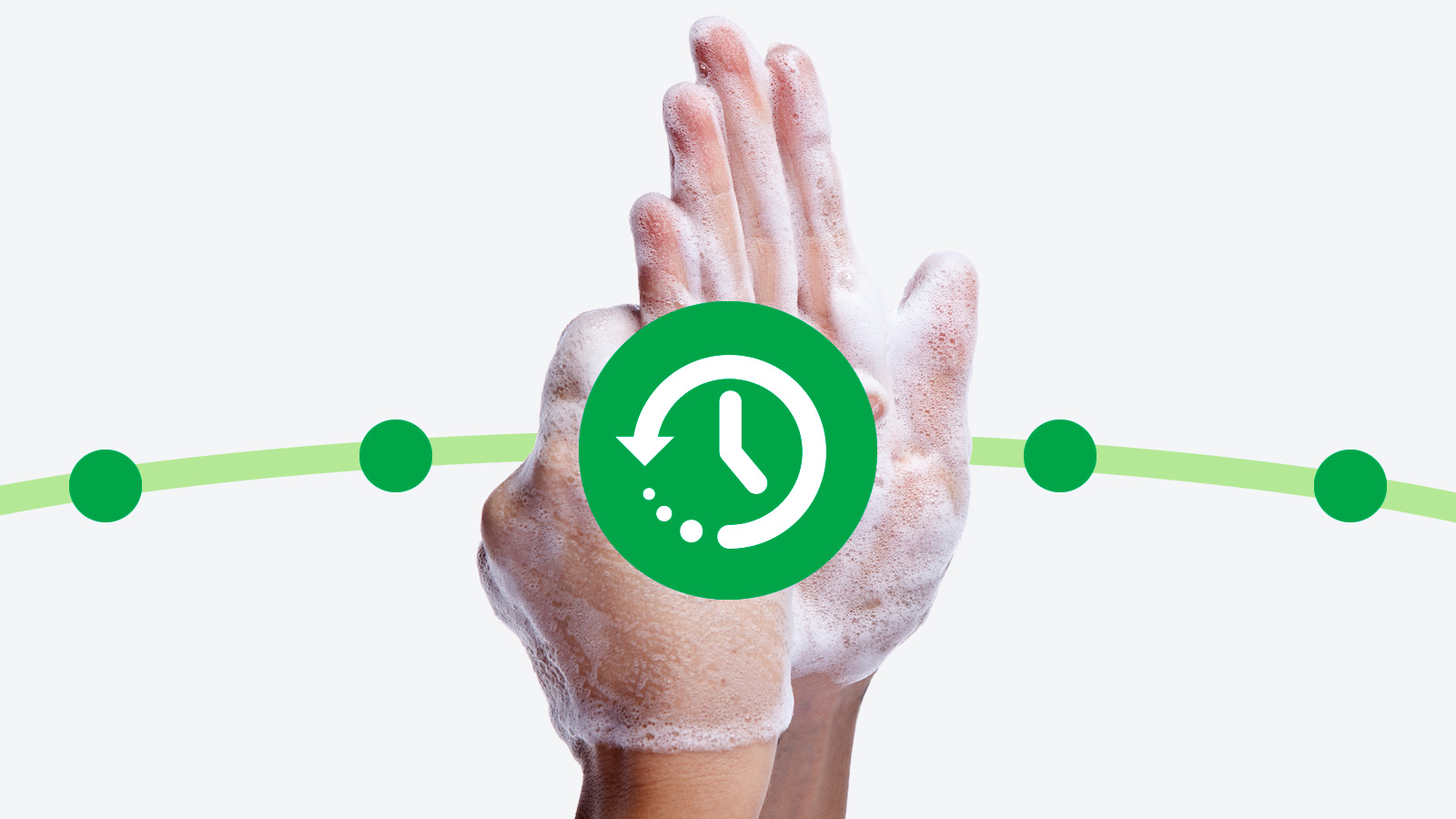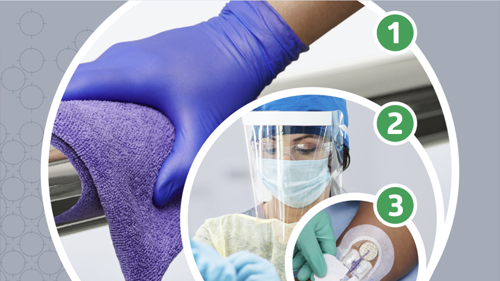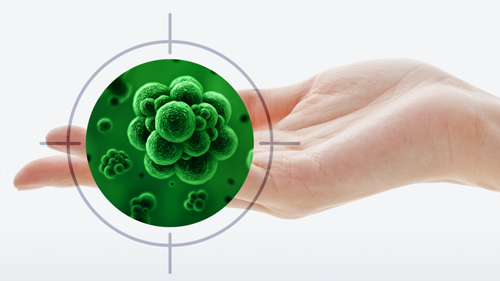Hand hygiene breakthroughs and their impact on healthcare
Advancements from handwashing to technology have been transforming.

Reading Jane Brody’s July 2021 article “Why We Should Keep Washing Our Hands Post Pandemic”1 and noting her references to the Jewish and Muslim roots of hand hygiene, I thought it would be a good idea to reflect on the key healthcare-related moments in hand hygiene through the centuries. Here’s a look at 12 of them.
1
The idea that physicians should wash their hands before and after patient contact dates at least as far back as the 1100s when Moses Maimonides wrote, “I dismount my animal, wash my hands, go forth to my patients,” and “Never forget to wash your hands after having touched a sick person.”2
2
In April 1847 Ignaz Philipp Semmelweis, a Hungarian physician, was working in Vienna General Hospital’s first obstetrics clinic. This clinic was used for teaching medical students who conducted autopsies as part of their training. A second clinic was used only for the training of midwives who had no contact with cadavers. Semmelweis noted that the mortality rate from puerperal or “childbed” fever was 18.3% when the physicians attended obstetrical patients directly after performing autopsies. The rates were much lower in the second clinic.
He proposed the practice of washing hands in a solution of chlorinated lime (calcium hypochlorite) as a way to “remove the putrid smell of infected autopsy tissue.”3 After the hand-cleansing practice was put in place that May, the rates dropped 90% to 2.2%, 1.2% and 1.9%, respectively, in June, July and August, comparable to the second clinic.
While today Semmelweis is known as the grandfather of hand hygiene, his research conflicted with prevailing opinions of scientists and physicians at the time. And his recommendations were rejected by the medical community at large. Some doctors took offense at the suggestion that they should wash their hands and ridiculed Semmelweis. In 1865, after experiencing a nervous breakdown, Semmelweis was committed to an asylum and died from an infection after being beaten by guards.
Some doctors took offense at the suggestion that they should wash their hands and ridiculed Semmelweis.
3
Until the 1970s, it was common practice for healthcare facilities to have hand soap available from open-reservoir dispensers refilled from gallon jugs. These dispensers required cleaning between each fill-up, which was likely not done with consistency. A start-up company from San Antonio, Texas, invented “bag in a box” refills—closed, sealed, sanitary refills of hand hygiene products that eliminated most contamination risk. Today, virtually all healthcare facilities use hand hygiene systems based on sealed refills.
4
Alcohol-based handrubs (ABHRs) were introduced into the healthcare market in the 1980s. At first there was reluctance by infection prevention and nursing leaders to abandon soap-and-water handwashing. Use of ABHRs today is the standard for patient care globally and is routinely used for hand hygiene.
It is easy to see a similarity between Semmelweis and early ABHRs. As the German philosopher Arthur Schopenhauer said, “All truth passes through three stages. First, it is ridiculed. Second, it is violently opposed. Third, it is accepted as being self-evident.”4
5
Although widely used in healthcare facilities, ABHRs—or “instant hand sanitizers” as they came to be known—were first widely available to consumers in 1997 through major retail outlets. The first in-store display with a tester pump bottle proclaimed, “Try Me! No Water, No Towel…No Germs!”
6
The 2002 CDC Guideline for Hand Hygiene in Healthcare Care Settings5 declared ABHRs with 60% to 95% alcohol to be the most effective, finally providing guidance on what was already well known and accepted practice—20 years after their first use.
7
The World Health Organization (WHO) introduced the “5 Moments of Hand Hygiene” in 2009 to reduce the risk of healthcare-associated infections (HAIs). This has become the standard for most of the world today, although the United States still primarily uses the “in-and-out” standard.
The WHO introduced the “5 Moments of Hand Hygiene” in 2009 to reduce the risk of HAIs.
8
In 2009, The Joint Commission published its monograph on compliance, “Measuring Hand Hygiene Adherence: Overcoming the Challenges.”6 The paper contained a great deal of information on methods to measure compliance (direct observation, product utilization measurement, patient surveys, video cameras and more), along with their relative strengths and limitations. However, it fell short of suggesting specific best practice standards of care.
9
John Boyce, in his 2017 paper, “State of the Science Review—Electronic Monitoring in Combination With Direct Observation as a Means to Significantly Improve Hand Hygiene Compliance,”7 presented evidence to support the emerging best practice standard of care: electronic monitoring as the preferred method for measuring hand hygiene compliance, with direct observation used for coaching, feedback and obstacle identification. Evidence supporting this approach was published by Kelly, et al. in 2016.8
10
Electronic hand hygiene compliance monitoring systems (EHHCMS) were first introduced in the early 2000s, but the first study linking their use to improved hand hygiene behavior, reduced HAIs and positive economic impact was published in 2016 by Kelly, et al.9 The study demonstrated a 25% increase in compliance, a 42% decrease in methicillin-resistant Staphylococcus aureus (MRSA) infections and a cost avoidance of $670 per bed per year in the first year.
11
Most earlier generation EHHCMS were based on RFID (radio frequency identification devices), RF (radio frequency) or required work flow and/or behavior changes. They were expensive and had many shortcomings, likely reasons for low adoption. 2019 saw the first commercial use of near field magnetic induction (NFMI)-based monitoring technology, which could measure nearness of healthcare workers to hand hygiene dispensers and patients with centimeter-level accuracy (versus meter+ level accuracy with RFID-based systems).
This technology enabled precise measurement of multiple parameters, such as how long a healthcare worker actually washed their hands with soap and water, the time between entrance and engagement with a hand sanitizer or washing station, closeness to the patient bed and more. NFMI technology offers more actionable data than any other technology platform and appears to be the emerging breakthrough that may lead to higher adoption of EHHCMS.
12
The 2021 revised Leapfrog Group Hand Hygiene Standard10 represents some of the most specific hand hygiene requirements provided by any guideline-setting organization. To achieve top Leapfrog Safety Grades and qualify for the coveted Leapfrog Top Hospital Award, healthcare facilities must document up to 200 direct hand hygiene observations per unit per month for all patient care areas or, alternatively, use a validated EHHCMS.
Healthcare facilities that meet the requirements of this comprehensive standard can more readily create a safety culture—one that drives sustainable improvement and reduces the risk of avoidable harm.

VP Patient Safety Innovation for Medline Industries, LP
Paul invented the first electronic hand hygiene monitoring system designed to improve hand hygiene performance while reducing infections and costs. He is an innovative and mission-driven leader with more than 35 years of experience in hand hygiene and patient safety solutions. Paul also shared hand hygiene insights as a past contributor to Healthcare Hygiene Magazine.
Disclosure: Medline was a 2021 member of the Leapfrog Partners Advisory Committee and has a collaborative relationship with a company that offers electronic hand hygiene monitoring services.
References:
- Why We Should Keep Washing Our Hands Post Pandemic
- Hand Hygiene (ecri.org)
- Ignaz Semmelweis—Wikipedia
- Arthur Schopenhauer—All truth passes through three…
- 2002 CDC Guideline for Hand Hygiene
- Joint Commission Monograph on Adherence
- Boyce JM. Electronic Monitoring in Combination with Direct Observation as a Means to Significantly Improve Hand Hygiene Compliance. (2017) Am J Infect Control. 45(5), 528-535.
- Kelly W, Blackhurst D, Steed C, Boeker S and McAtee W. Use of the Targeted Solutions Tool and Electronic Monitoring to Improve Hand Hygiene Compliance. Paper presented at the 2016 SHEA annual meeting.
- Kelly JW, Blackhurst D, McAtee W and Steed C. Electronic Hand Hygiene Monitoring as a Tool for Reducing Health Care Associated Methicillin-Resistant Staphylococcus aureus Infection. (2016) Am J Infect Control. 44(8), 956-957.
- Leapfrog Safety Grade 2021 Updates.




